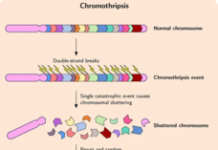Long-term 20-year follow-up of premenopausal patients with oestrogen receptor (ER)-positive breast cancer and stratification by the 70-gene Risk Signature suggested that patients at high risk of distant disease recurrence derive significant benefit from goserelin, while patients at low risk have greater benefit with tamoxifen. These findings were presented at the ESMO Breast Cancer Virtual Congress 2021, held 5 to 8 May 2021.
Annelie Johansson and Linda Lindström of the Department of Oncology and Pathology, Karolinska Institute in Stockholm, Sweden and colleagues investigated the utility of the 70-gene risk signature in determining the 20-year benefit of endocrine therapy in premenopausal patients with breast cancer.
According to the authors this is the first time assessment of the 20-year benefit of goserelin and tamoxifen as stratified by the molecular 70-gene signature risk prediction in premenopausal women carried out in a randomised trial.
The study enrolled 924 premenopausal patients with breast cancer from 1990 to 1997, who were randomly assigned to one of 4 cohorts to receive 2 years of goserelin, tamoxifen, the combination of goserelin and tamoxifen, or to receive no endocrine therapy. In addition, 459 patients with lymph-node positive disease received standard chemotherapy. Patient characteristics were well balanced across treatment arms and the patients’ median age was 46 years (range, 26 to 57 years).
The 20-year follow-up was carried out using the Swedish high-quality National registries following randomisation.
Clinically relevant breast cancer markers were identified by immunohistochemistry in 729 patients; of these samples, Agilent microarray profiling could be done in 589. The 70-gene signature classified patients into groups with low or high risk of recurrence. The investigators assessed the benefit of endocrine therapy by Kaplan-Meier analysis and multivariable Cox proportional hazard regression. The long-term 20-year risk of distant recurrence adjusted for tumour size, grade, lymph-node status, progesterone receptor, HER2, Ki-67, chemotherapy, and radiotherapy.
Endocrine therapy reduced the risk of distant occurrence in ER-positive breast cancer
Analysis of all 610 ER-positive patients demonstrated that endocrine therapy, including goserelin (hazard ratio [HR] 0.48; 95% confidence interval [CI] 0.32-0.72), tamoxifen (HR 0.59; 95% CI 0.39-0.88), the goserelin/tamoxifen combination (HR 0.67; 95% CI 0.46-0.97) reduced the 20-year risk of distant recurrence compared to patients receiving no endocrine therapy (HR 1.00).
Stratification by the 70-gene signature identified different risk groups that derived benefit from specific treatments
Stratification by the 70-gene signature demonstrated that 306 low risk patients derived a significant benefit from tamoxifen therapy (HR 0.38, 95% CI 0.18-0.82), while goserelin (HR 0.80), and goserelin/tamoxifen (HR 0.72) provided less benefit to these patients.
In contrast, 159 patients at high risk showed significant benefit from goserelin therapy (HR 0.22, 95% CI 0.10-0.49), while less benefit was observed with tamoxifen (HR 0.69) or the combination (HR 0.64).
The investigators indicated that similar findings were seen when using breast cancer-specific survival as the endpoint.
Prof. Prudence Francis of the Peter MacCallum Cancer Centre in Melbourne, Australia who discussed the study results said that it is an innovative translational study assessing for differential benefits of endocrine therapies according to multigene assay results (high risk vs low risk) with 70-gene assay results in 465 patients, split across 4 different endocrine therapy arms and 2 gene assay risk categories, relatively small number of patients in each. She commented that short duration of endocrine therapy/tamoxifen (only 2 years), prior chemotherapy in some patients, absence of HER2 therapy, might influence outcomes. The results should be viewed as hypothesis generating. Multigene assay results are not yet available for larger patient cohorts (SOFT and TEXT).
Conclusions
The authors concluded that this study demonstrated a unique long-term follow-up in premenopausal patients with breast cancer, which suggested that high risk patients benefit significantly from goserelin, whereas low risk patients benefit from tamoxifen.
This study was funded by the Swedish Research Council (Vetenskapsrådet), the Swedish Research Council for Health, Working life and Welfare (FORTE), and the Swedish Cancer Society (Cancerfonden).
Reference
LBA1 – Johansson A, Dar H, Van T Veer L, et al. 20-year benefit of endocrine therapy in premenopausal breast cancer patients by the 70-gene risk signature. ESMO Breast Cancer Virtual Congress 2021 (5-8 May).










